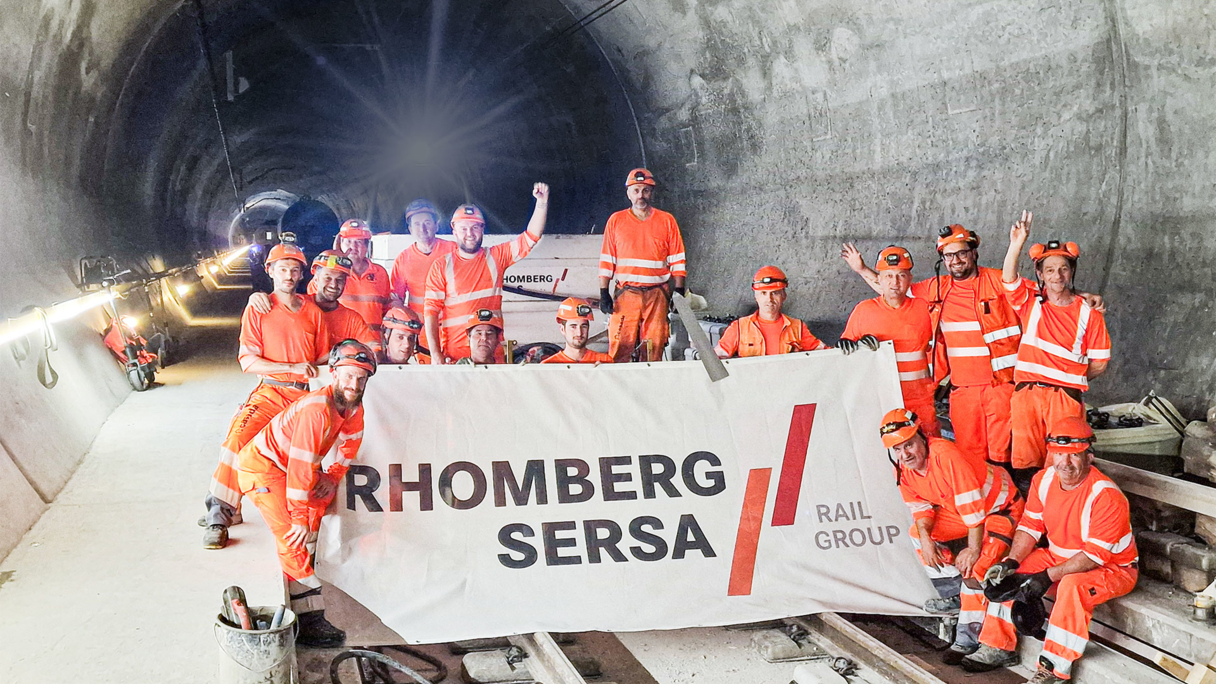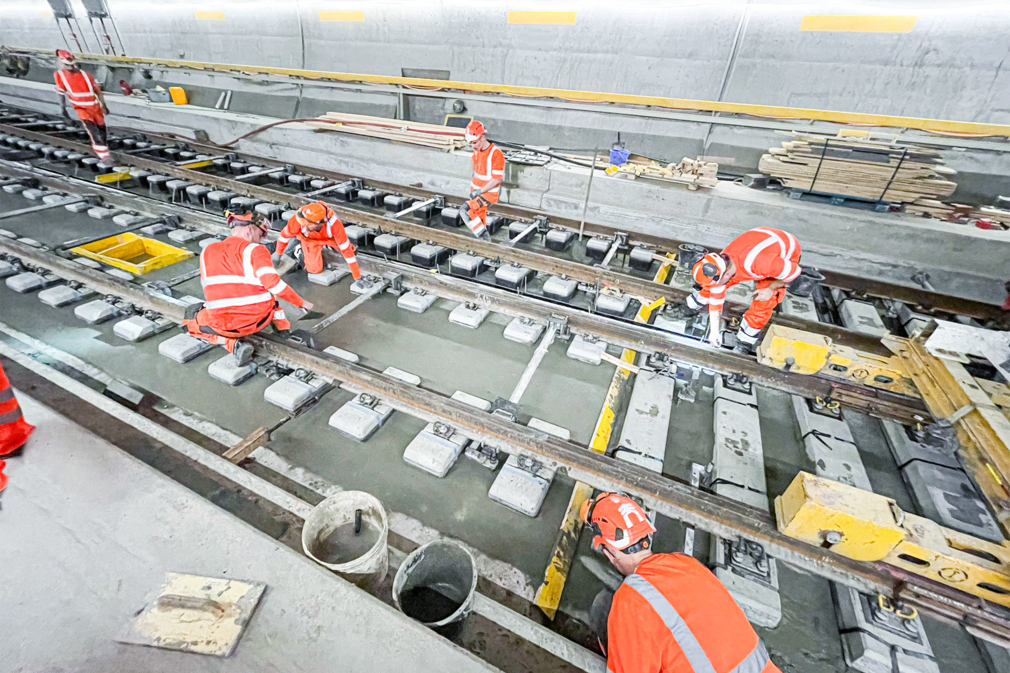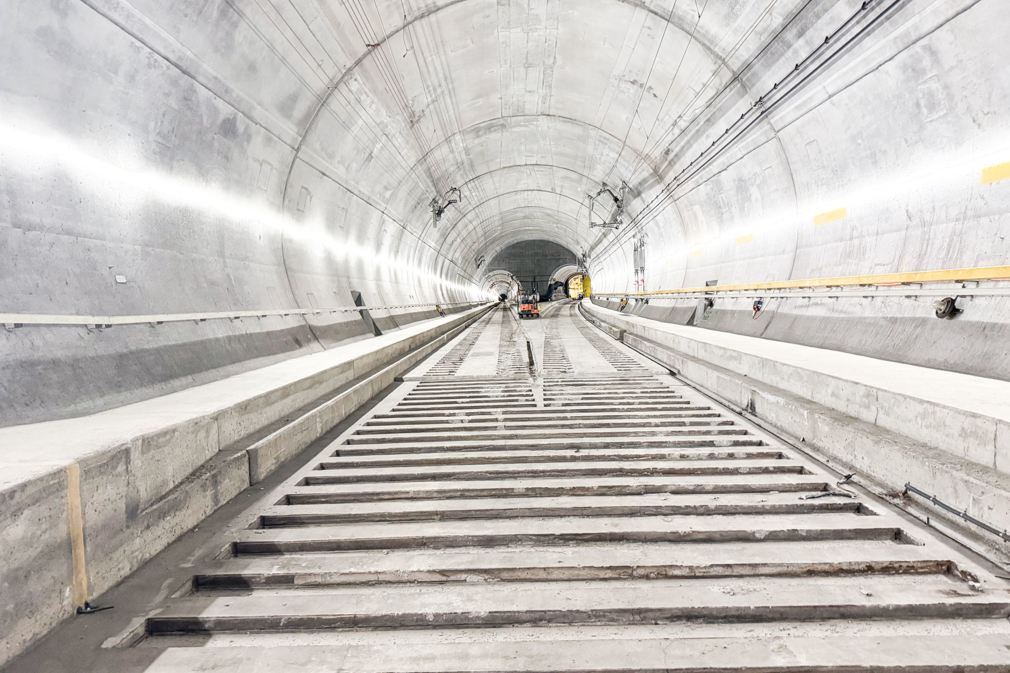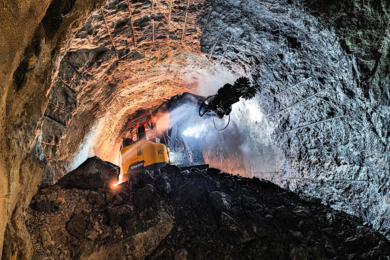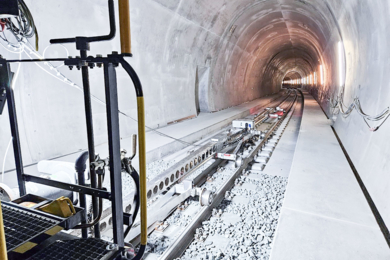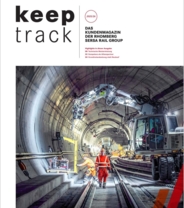How RSRG restored the Gotthard Base Tunnel under extreme conditions.
Following a major freight train derailment, a seven-kilometre section of slab track had to be completely refurbished – a technical challenge under the toughest conditions.
At 57 kilometres in length, the Gotthard Base Tunnel (GBT) is the longest railway tunnel in the world and a vital transport artery in Europe. Each day, numerous freight and passenger trains travel this route. All the more important, then, that this key link between Northern and Southern Europe through the Alps runs smoothly. But in August 2023, operations came to an abrupt halt.
The accident and its aftermath
A faulty wheelset caused a freight train to derail, severely damaging a significant stretch of infrastructure. The slab track was particularly affected – including rails, sleeper blocks and the switch-over gate.
Immediately after the incident, tunnel clearance began, with RSRG providing support. The derailed train and all damaged materials were removed. RSRG then conducted a detailed damage assessment and developed the refurbishment plan. A full renewal of the affected section was decided in order to meet the highest track performance standards.
High-speed refurbishment
Work began at the end of October 2023 under a strict timeline to restore full operations as quickly as possible. The first step was to install two high-speed turnouts, including their drives, at the Faido multifunction station. This was followed by complete renewal of the damaged slab track, with rails, over 20,000 sleeper blocks and the concrete layer replaced.
Due to stringent requirements regarding track geometry and stability, the team deployed the most advanced milling, concreting and surveying technologies. The use of LVT (Low Vibration Track) support points – a proven system for reducing vibrations – ensures a long-lasting, stable track structure.
Logistical challenges in the tunnel
Limited space and access via just one tunnel bore made the works particularly demanding. Materials and personnel had to be precisely coordinated, with transport vehicles, concrete pumps and machinery operating in perfect sync. The track installation followed a structured process: removal of the damaged track, milling, surveying, concreting and finally welding.
Progress was continuously documented and visualised in “Maps of RSRG”, the in-house WebGIS platform developed by Digital Rail Services (DRS). Up to 80 staff members worked daily in three shifts under challenging tunnel conditions. Around 300 metres of track were refurbished each week.
One particular challenge was that freight traffic had to continue operating – albeit in a limited capacity – in the adjacent tunnel bore. This presented a significant logistical hurdle for SBB (Swiss Federal Railways) and all executing parties, and had to be taken into account throughout the construction process.
Project dimensions
The refurbishment required enormous quantities of materials and precise logistics:
- Nearly 23,500 LVT blocks were removed and reinstalled.
- Around 4,500 m³ of concrete were milled out and re-poured.
Extreme conditions for people and machines
High temperatures and limited air circulation made working in the tunnel physically demanding. In addition, high levels of dust and exhaust fumes from machinery required specific safety measures, including protective masks and strictly controlled ventilation.
Precision to the millimetre
Slab track requires exceptional installation accuracy. Given the international nature of traffic, the highest standards of both Switzerland and the EU were applied. Relative and absolute positioning accuracy of ±2 mm had to be demonstrated along the entire track and turnout sections.
High-precision, efficient surveying
To meet these stringent requirements, multiple measurements were taken throughout the construction process along the seven-kilometre section. A dedicated four-person team from Digital Rail Services ensured compliance before and after every concreting step.
Final checks were carried out using an IMU-based measurement system, enabling the entire section to be surveyed in a single day.
In addition, test runs were performed using special measuring vehicles to verify safety and ride comfort. Only once all tests had been successfully completed was the tunnel reopened for regular rail traffic.
Every sleeper counts
Another key challenge was documenting the exact position of all ~23,500 sleepers. A dual-laser scanner system was used for rapid and reliable surveying. From the resulting point cloud, the LVT sleepers were classified using machine learning by Digital Rail Services, and the exact position of each sleeper was automatically determined. Thanks to the international team and the use of internal synergies, the entire process was developed within just a few weeks.
Conclusion
A success for rail transport
The refurbishment of the Gotthard Base Tunnel marked a milestone in the maintenance of European infrastructure. Thanks to precise planning, cutting-edge technology and outstanding engineering, the tunnel was brought back into operation quickly, safely and on schedule – without delay. A remarkable example of efficiency and teamwork in rail transport. The GBT remains a symbol of progress – today and for the mobility of tomorrow.
